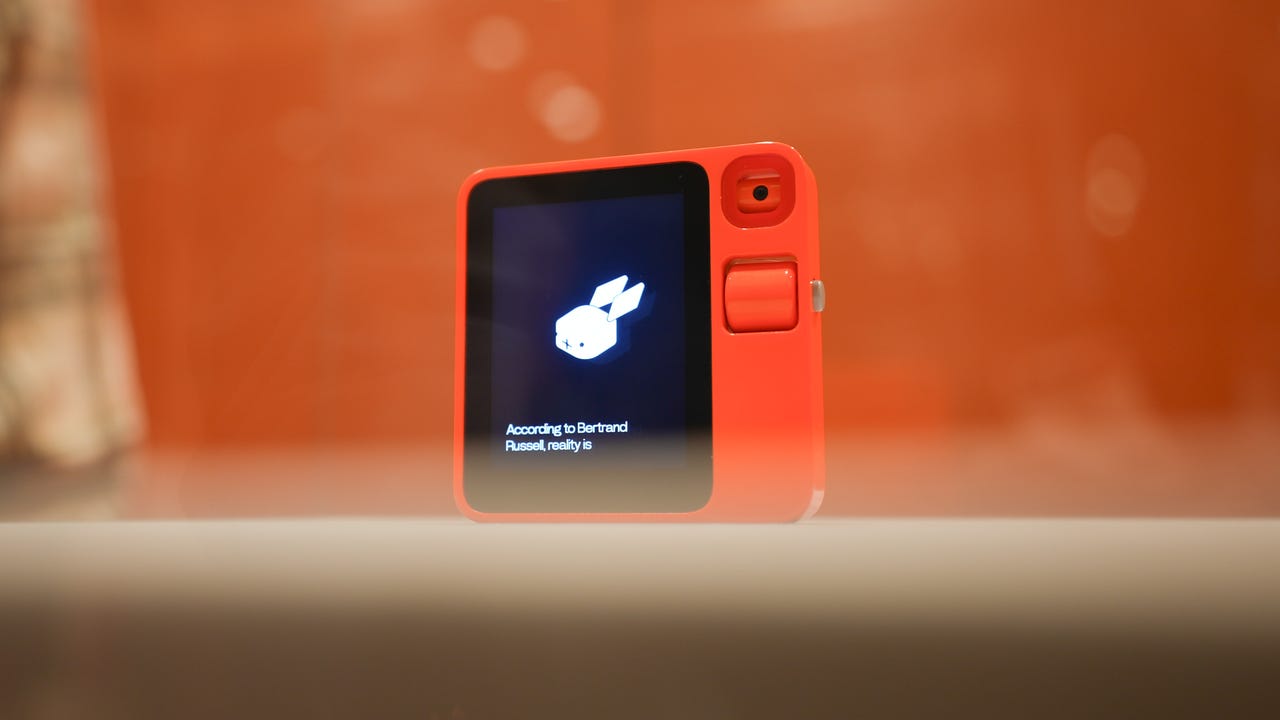This AI startup made a $199 gadget that replaces apps with 'rabbits' - and it might just work

As companies race to implement AI capabilities onto our most personal gadgets, one Santa Monica startup may have everyone beat by taking the road less traveled.
Also: CES 2024: What's Next in Tech
At CES today, Rabbit Inc. launched R1, a $199 consumer device powered by a natural-language operating system, with the goal of making app interactions obsolete.
"We've come to a point where we have hundreds of apps on our smartphones with complicated UX designs that don't talk to each other. As a result, end users are frustrated with their devices and are often getting lost," said Rabbit CEO, Jesse Lyu.
Lyu's not wrong. While it's become habitual for humans to interact with apps and web interfaces in a systematic way -- scrolling through drop-downs, long-tapping on text to copy and paste, filtering searches, etc. -- an AI that's trained to fulfill those tasks saves us time and energy.
At the core of Rabbit R1 is the company's "Large Action Model," an AI foundation that can train "rabbits" to see and learn how a user interacts with their typical apps and web experiences and then reproduce it, when asked for, on a customized cloud platform. This way, instead of requiring users to download multiple apps on their personal devices, the Large Action Model can access the services via a private web portal, dubbed "Rabbit hole," in which users can sign into their accounts, allow permissions, and more.
Also: Humane launches $699 AI-powered projector to replace your phone
"Similar to handing one's unlocked phone to a friend who will help order takeout, Rabbit OS (the device's operating system) performs tasks for users with their permission, without preemptively storing their identity information or passwords," the company explains in its press release.
The focus on security extends to the industrial design of the R1, which was made in partnership with Teenage Engineering, the firm responsible for some of the most creative designs in tech, including the Nothing Phone.
Besides the pocketable figure of the R1, there's a rotating "Rabbit eye" camera that, by default, covers its view by facing downward. The camera can be used for video calls, as well as "executing some of the most advanced computer vision applications," according to the company. I'll have a greater sense of what that chain of tech jargon implies during my CES demo.
Also: Apple reportedly eyeing generative AI push and Siri overhaul for the iPhone
Also, the microphone on the R1, mainly used for voice commands, only turns on when you press the side-mounted push-to-talk button. Other design elements include a 2.88-inch touchscreen display, a scroll wheel (pictured above) for navigating the OS, and a USB-C port for charging. The R1 is equipped with a 1,000mAh battery, 128GB of storage, and a SIM slot for mobile data.
Preorders for the Rabbit R1 begin today, with a rather accessible price (as far as CES announcements go) of $199, no monthly subscription required. By the time you're reading this, I'll be getting a hands-on demo of the Rabbit R1, seeing if one of the first standalone AI devices in 2024 can truly live up to the hype. Stay tuned for all of my initial thoughts.
